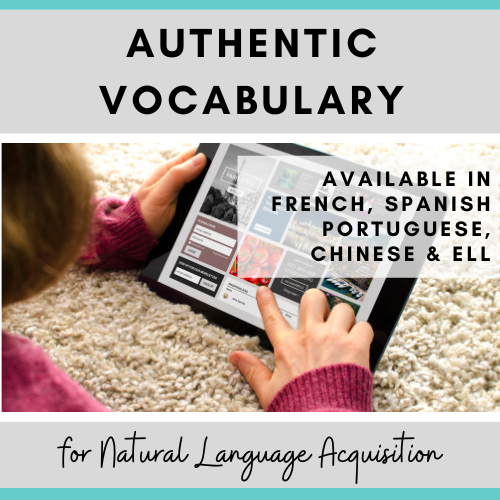
Tools for World Language teachers.
Lessons for real life.
We teach world language through dynamic cultural context no textbook can truly capture.
Our authentic, hands-on curriculum resources engage students in active learning while supporting teachers with the most challenging aspects of classroom instruction.
Curriculum products for any language.
Our growing suite of PDF & Google Apps™ materials are available to download from our Teachers Pay Teachers store.
Talk the talk.
CHALLENGE: Interpersonal Speaking
Do you struggle to support your students with spontaneous communication in the target language?
OUR SOLUTION: Conversation Templates are a tool for scaffolding interpersonal speaking through structured, open-ended prompts, which help students listen to their partner, respond appropriately, and negotiate meaning. As students practice the same Conversation Template multiple times, they improve command of language structures, vocabulary, and fluency. Ultimately, Conversation Templates improve students’ interpersonal speaking proficiency, leading to more confidence and more fun!
Connect the Dots.
CHALLENGE: Number Fluency
Do your world language students need more practice with listening and speaking numbers in the target language?
OUR SOLUTION: Randomly sequenced dot-to-dot activities are a great way to practice! Students must listen and connect each dot as they hear the number, as well as read them aloud to their partners.
French, Spanish, Portuguese, ELL, and Chinese Curriculum Products
Find the words.
CHALLENGE: Vocabulary Acquisition
Does your vocabulary instruction involve handing students a list and helping them memorize it? Why not teach students to figure out vocabulary in context instead?
OUR SOLUTION: Using authentic sources to introduce vocabulary facilitates engagement, helps students learn words naturally, provides linguistic context, and offers the fun of problem solving within the target language. No more boring memorization: learning vocabulary can be the most student-centered, culturally-integrated, and fun part of your classroom!
Build Comprehension
CHALLENGE: Engaging Grammar Instruction
Grammar is an abstract concept, and many students struggle to really internalize concepts such as verb tense, verb conjugation, and adjective agreement.
OUR SOLUTION: Students work in teams or individually to physically build accurate sentences. This research-based approach ties learning to physical movement, gives students a concrete framework for understanding abstract concepts, and develops awareness of language patterns. Plus, sentence builders are more engaging than traditional approaches to teaching grammar!
Start Strong
CHALLENGE: Meaningful Language Use on Day 1
How do you teach classroom procedures, build community, AND provide meaningful language instruction at the beginning of the school year?
OUR SOLUTION: Table Mascots is a fun, 4-part community building lesson to introduce classroom procedures, teach students about cognates, and begin using the target language immediately! Students get to know each other by collaborating in small groups to create a “table mascot” from craft supplies and using cognates to design and describe it. Working over several class periods, this activity helps establish classroom procedures and builds immediate community, while also providing a vehicle to practice personal introductions.
Speak Naturally
CHALLENGE: Learning Casual, Everyday Vocabulary
Traditional classroom instruction can only take us so far; to really know a language, students must be exposed to casual content in real-life settings
OUR SOLUTION: We find pop culture, slang, and commonly used phrases and create quick, engaging activities to improve students’ usage. Everyday Language lessons are low prep for the teacher; use them for fast finishers, sub plans, that last class before break, or anytime you need a fun 20 minute stand-alone activity!

“¡Es fabulosa! I’m so used to a pre-written script where I fill in the blank, but this is stuff I would actually say. It’s more authentic.”
— Maggie, Grade 11






